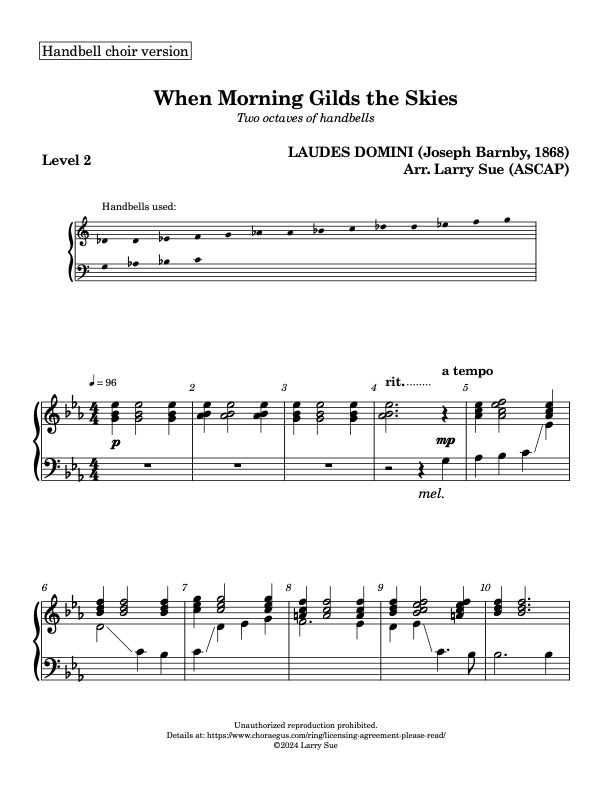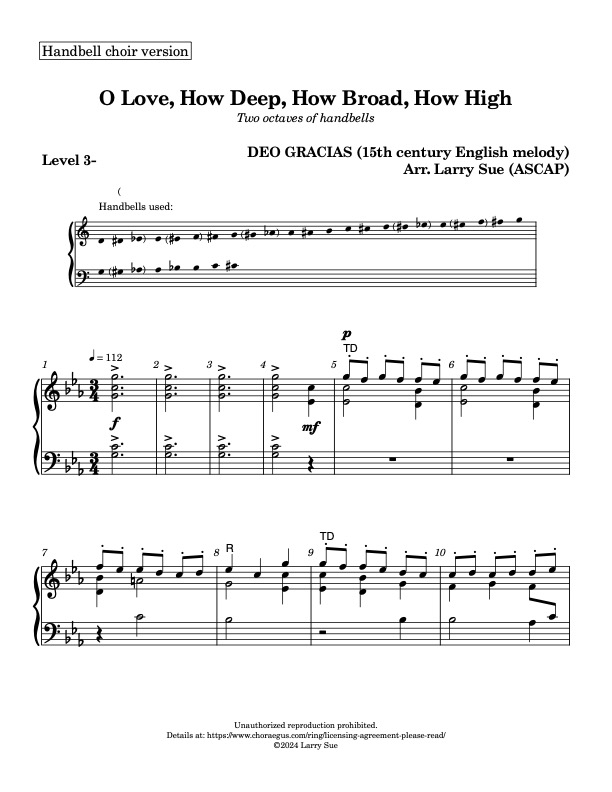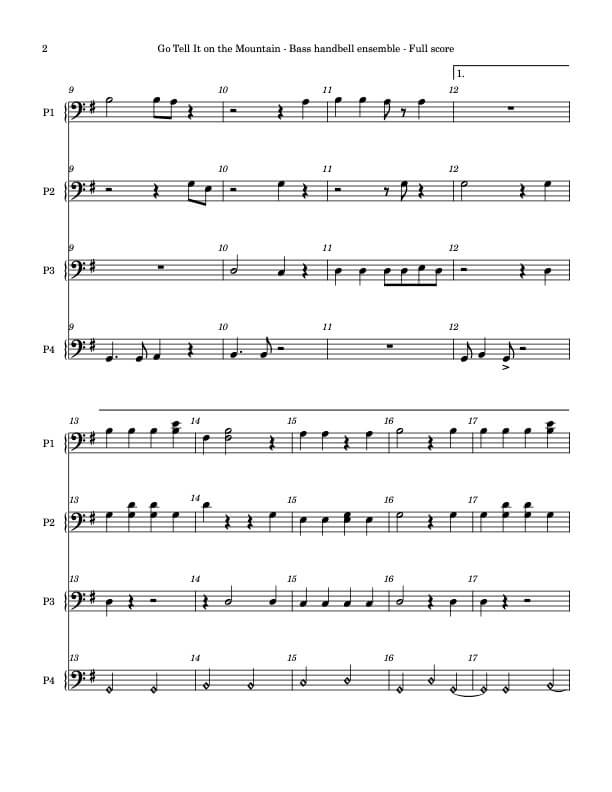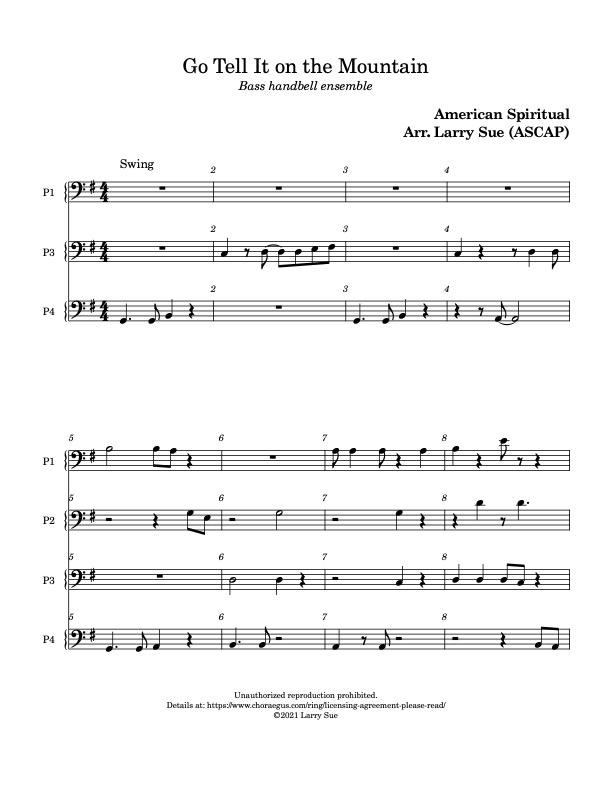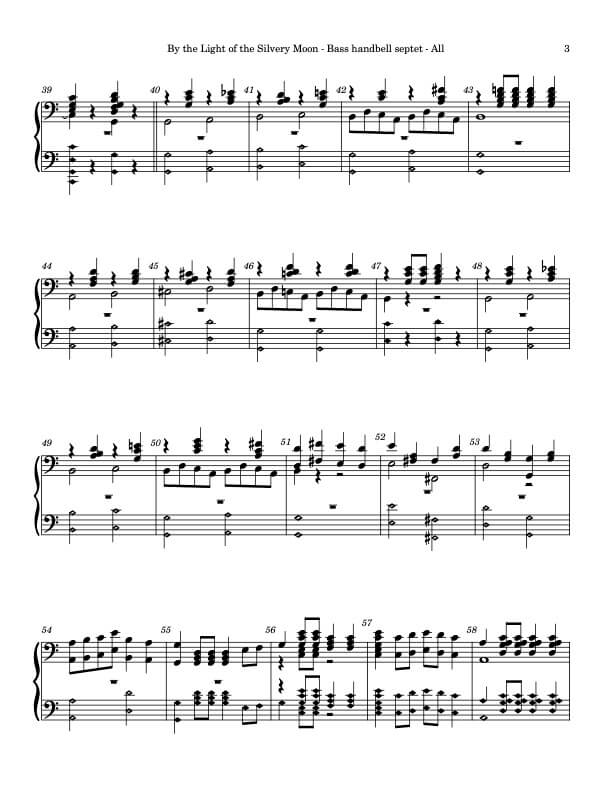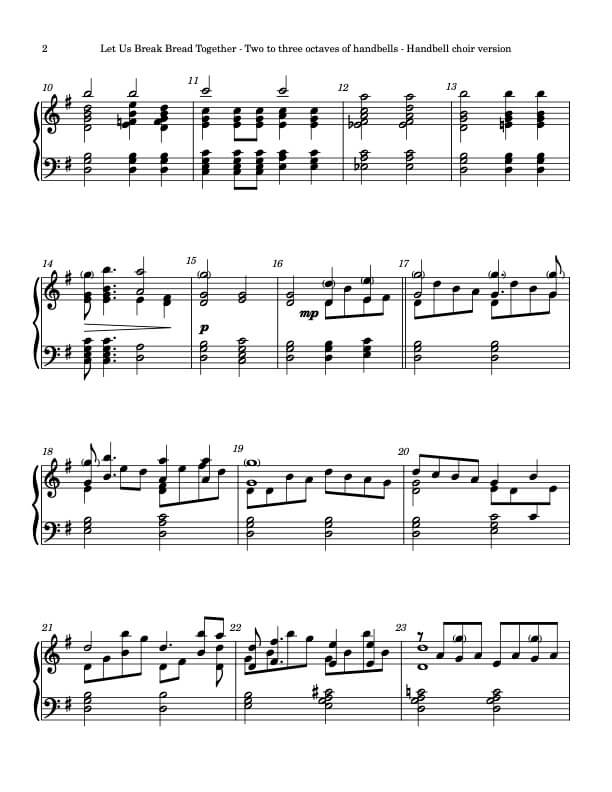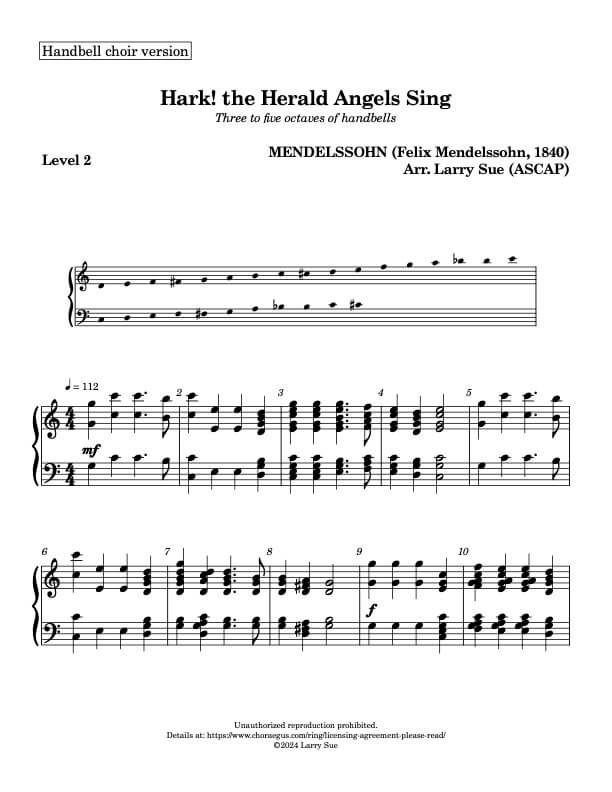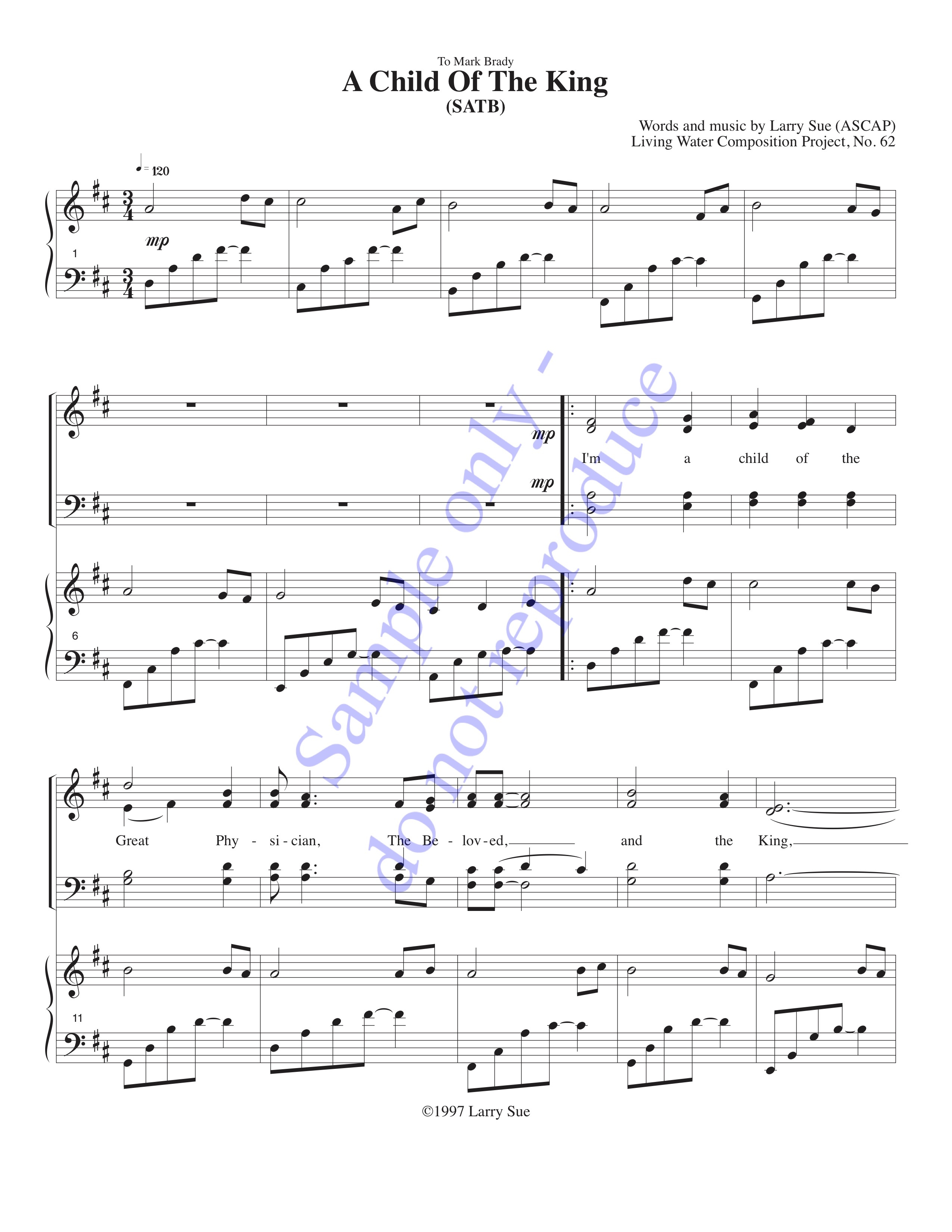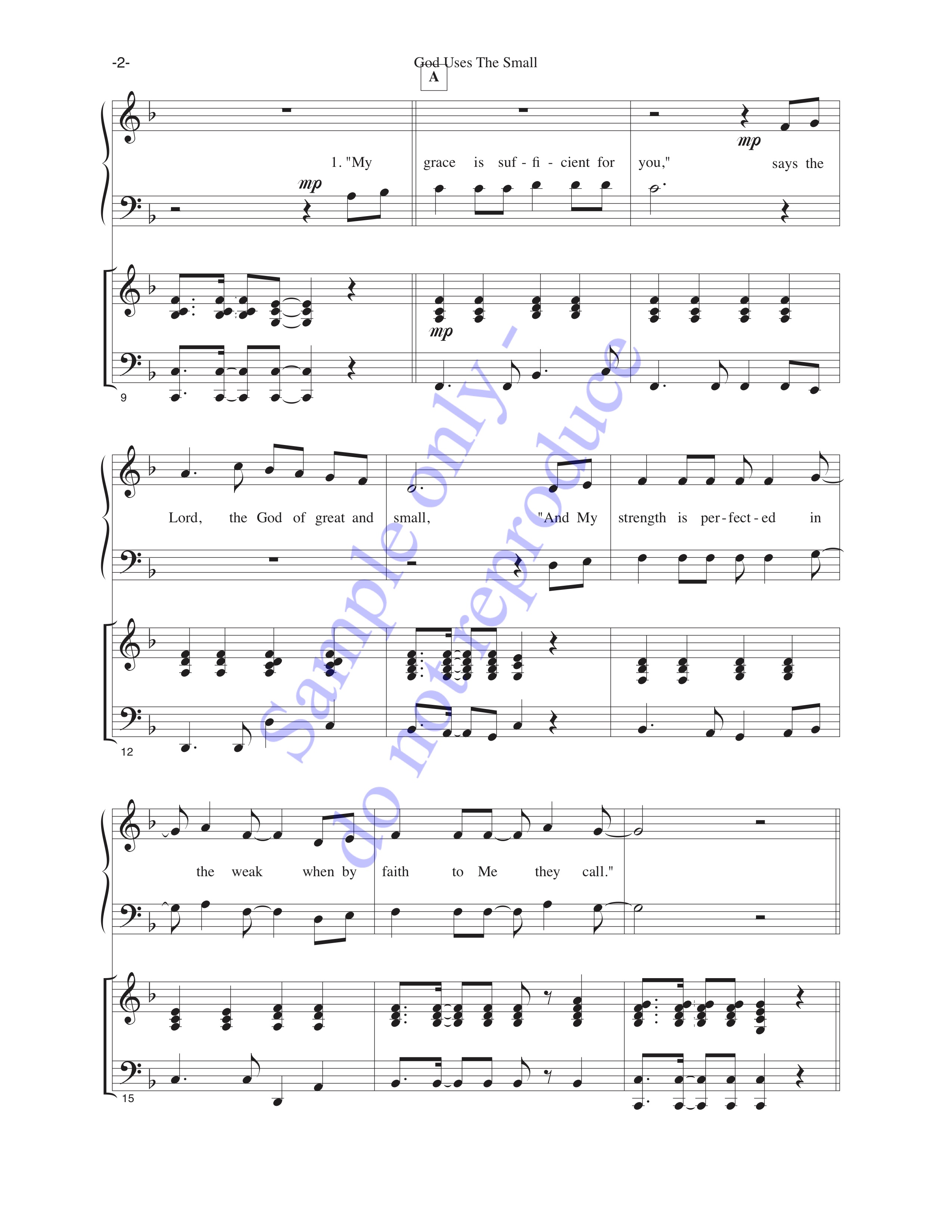Fanny Crosby and William Doane were a “dynamic duo” of hymn-writing in the decades on either side of the year 1900. She wrote the words, and he composed the music. One of their best-known hymns is To God Be the Glory Personal note: This was the favorite hymn of Larry’s great-aunt Pat. Our new arrangement …
Tag: handbell choir
A handbell choir is an ensemble of handbell musicians, each of whom usually has a specific subset of the entire set of bells assigned to them. The group members play the entire score by their combined efforts via a unique type of teamwork where expression and musicality are dependent on the ensemble members fusing their efforts to form a greater whole.
The sets of handbells played by handbell choirs vary in size, usually stated as an integral number of octaves. For instance, a three-octave bell choir uses notes from C4 to C7, while a seven-octave choir plays C2-C9.
Handbell choirs also use additional instruments, the most notable being handchimes. Handchimes bring a different sound to the mix, and are used for effect and contrast. Other ancillary instruments include, flute, trumpet, clarinet, and percussion; of the percussion family, the cajón is perhaps one of the more popular recent additions.
To God Be the Glory (TO GOD BE THE GLORY) (Handbells, 3 or 5 octaves, Level 4)
Fanny Crosby and William Doane were a “dynamic duo” of hymn-writing in the decades on either side of the year 1900. She wrote the words, and he composed the music. One of their best-known hymns is To God Be the Glory Personal note: This was the favorite hymn of Larry’s great-aunt Pat! To God be …
Feb 15
Beautiful Lilies (LILIES) (Handbells, 3 octaves, Level 3+)
Beautiful Lilies (hymn tune: LILIES) is an Easter hymn from the turn of the twentieth century. The Easter lily is a symbol of resurrection, and symbolizes the trumpet of victory that proclaims that Jesus has risen from the grave. Our arrangement for three octaves of handbells has a charm that will keep the song in …
Beautiful Lilies (LILIES) (Handbells, 3 octaves, Level 3+)
Beautiful Lilies (hymn tune: LILIES) is an Easter hymn from the turn of the twentieth century. The Easter lily is a symbol of resurrection, and symbolizes the trumpet of victory that proclaims that Jesus has risen from the grave. Beautiful lilies, / White as the snow, Speak to us softly / Of long ago; Telling …
Jan 22
Lift High the Cross (CRUCIFER) (Handbells, 3 or 5 octaves, Level 3-)
Lift High the Cross undoubtedly is most frequently sung in churches at Easter (and maybe on through Pentecost), but the message of salvation through Christ rings true the whole year round. Our arrangement for three or five octaves of handbells will be a welcome addition to your repertoire. Refrain: Lift high the cross, the love …
Lift High the Cross (CRUCIFER) (Handbells, 3 or 5 octaves, Level 3-)
Lift High the Cross undoubtedly is most frequently sung in churches at Easter (and maybe on through Pentecost), but the message of salvation through Christ rings true the whole year round. This arrangement will be a welcome addition to your repertoire. Refrain: Lift high the cross, the love of Christ proclaim till all the world …
Winter Dance (Handbells, 7 octaves plus handchimes, 2 octaves, Level 4)
Seiichi Kyoda composed this wonderful piece. His group Uttara-Kuru performed Winter Dance with a synthesis of traditional Japanese instruments (shakuhachi, koto, etc.) and electronica. The picture is of the citizens of a remote village celebrating life with a community dance. This is the version of Winter Dance being performed at the 2025 Bay View Week …
Jan 15
Mack the Knife (Handbells, 5-8 octaves, plus handchimes, 3 octaves, Level 5)
Bertolt Brecht and Kurt Weill wrote Mack the Knife in 1928 for the Threepenny Opera. Louis Armstrong, Ella Fitgerald, and Bobby Darin performed it, guaranteeing its place in our music social awareness. It’s such a happy, bouncy song that you’d hardly know it was talking about a hit man. But the legend lives on, and …
Mack the Knife (Handbells, 5-8 octaves, plus handchimes, 3 octaves, Level 5)
Bertolt Brecht and Kurt Weill wrote Mack the Knife in 1928 for the Threepenny Opera. Louis Armstrong, Ella Fitzgerald, and Bobby Darin performed it, guaranteeing its place in our music social awareness. It’s such a happy, bouncy song that you’d hardly know it was talking about a the bad, bad guy in the story. But …
Jan 10
Mahler Swing (Handbells, 5-8 octaves, plus handchimes, 2 octaves, Level 5)
I fell in love with Mahler’s symphonies a long time ago. They’re gigantic works which stretch the limits (so far…) of how musical expression can be built. As of the twentieth century, they represent the pinnacle of orchestral composing. Mahler’s first symphony is about an hour in length (around three times the length of Mozart’s …

